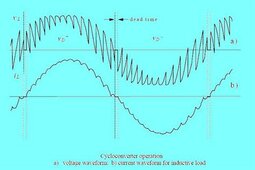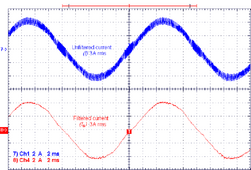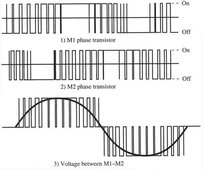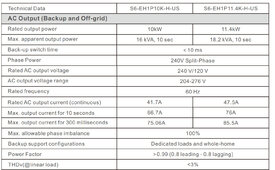DPC
Solar Enthusiast
There was a time when the chopping speed of inverters caused issues with motors in industry.
The jagged wave forms caused voltage spikes and the motors had to be inverter rated, and considerations had to be made around cable terminations because of the spikes... ( radio guys will be familiar with reflected wave stuff )
Higher chopping speeds and better electronics reduced these problems.
I cant remember the last time I installed a drive that needed like and load reactors to protect the motors and insulation.
I bring this up because its the same technology...
I don't think you need to worry about this stuff today in brand name quality inverters for home use.
Fly wheel action and carry through power by transformers?
I hear that said from time to time in my circles but I don't think its really a thing unless your talking about a fero resonant power conditioning transformers and that is not applicable to this.
Bad old days...
Cycloconverter output was very jagged and the spikes at the end of particularly long cable runs could burn insulation.

Look at how much nicer the current flow is in a modern IGBT drive.
This image says filtered..
Might have some output reactors on it, article is not specific

A cheap inverter without the caps and reactors required to make clean AC wll have an output that looks like this.

The jagged wave forms caused voltage spikes and the motors had to be inverter rated, and considerations had to be made around cable terminations because of the spikes... ( radio guys will be familiar with reflected wave stuff )
Higher chopping speeds and better electronics reduced these problems.
I cant remember the last time I installed a drive that needed like and load reactors to protect the motors and insulation.
I bring this up because its the same technology...
I don't think you need to worry about this stuff today in brand name quality inverters for home use.
Fly wheel action and carry through power by transformers?
I hear that said from time to time in my circles but I don't think its really a thing unless your talking about a fero resonant power conditioning transformers and that is not applicable to this.
Bad old days...
Cycloconverter output was very jagged and the spikes at the end of particularly long cable runs could burn insulation.

Look at how much nicer the current flow is in a modern IGBT drive.
This image says filtered..
Might have some output reactors on it, article is not specific

A cheap inverter without the caps and reactors required to make clean AC wll have an output that looks like this.

Last edited:





